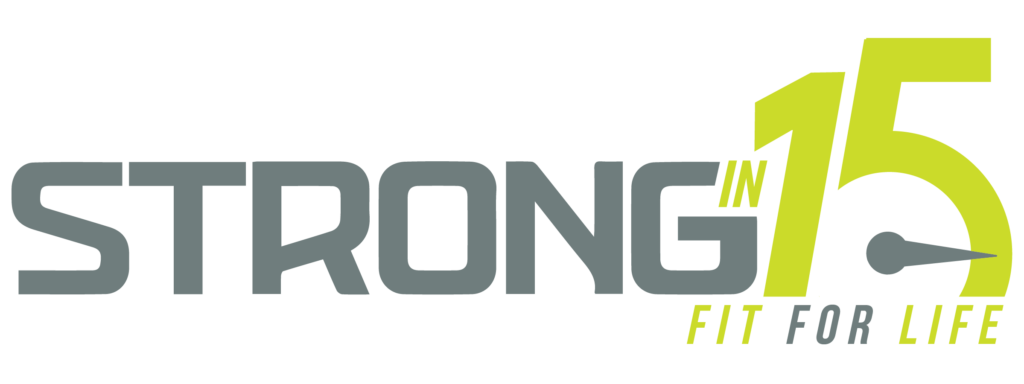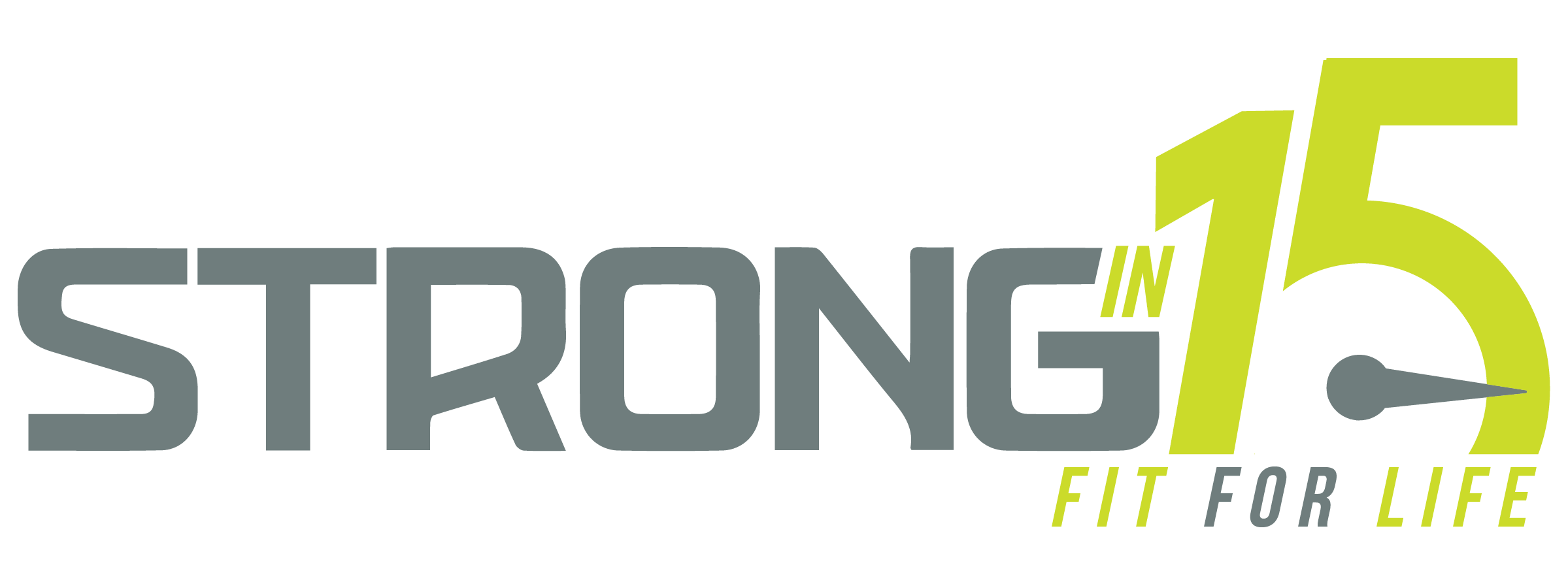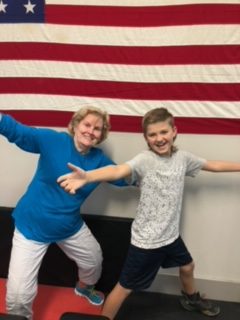6 Basic Movements at Strong In 15
The Strong in 15 workout consists of six basic movements, using arms, legs, and/or torso with a push and pull movement. We do not use barbells or dumbbells with our resistance training programs. We use the ARX Alpha to provide the stimulus needed to adequately exhaust a majority of bodily muscle fibers.
1. The Chest Press is done through a push motion that provides stimulus to the arm muscles focused primarily on the triceps, wrists, and chest. The pectoral muscles are the primary muscles of the chest. Along with the triceps, the posterior or back of the upper arm will grow in fatigue as the movement progresses overtime. Some accessory muscles, such as the entire core are used to stabilize body parts that are not designed to make the movement. These muscles could be very active in an isometric or non-moving phase.
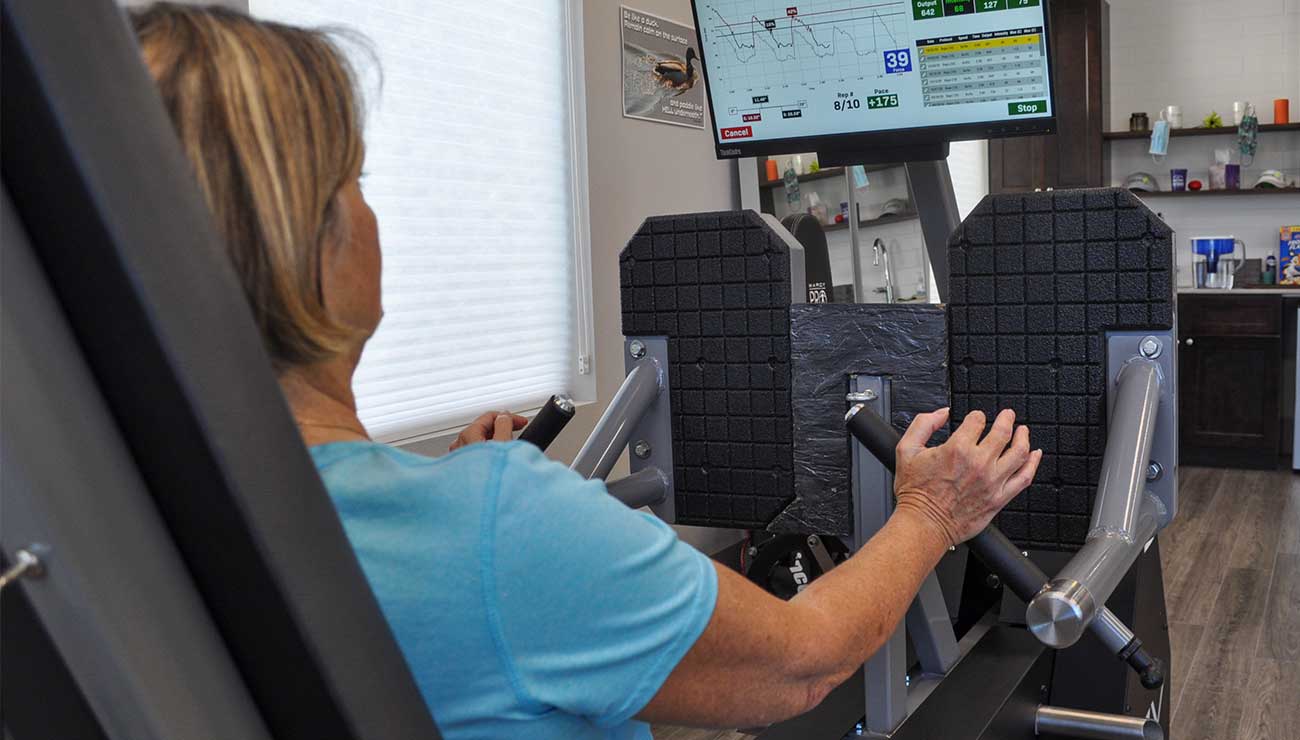
2. The Row is done through a pull movement which involves the bicep muscles in the front of the upper arm. “Guns” is how they are referenced by some of my clients. It’s amazing to see so many women in their 60’s and 70’s express interest in having guns. They are often delighted to find “a muscle” (offering a similar appearance as “guns”) that they thought didn’t exist.
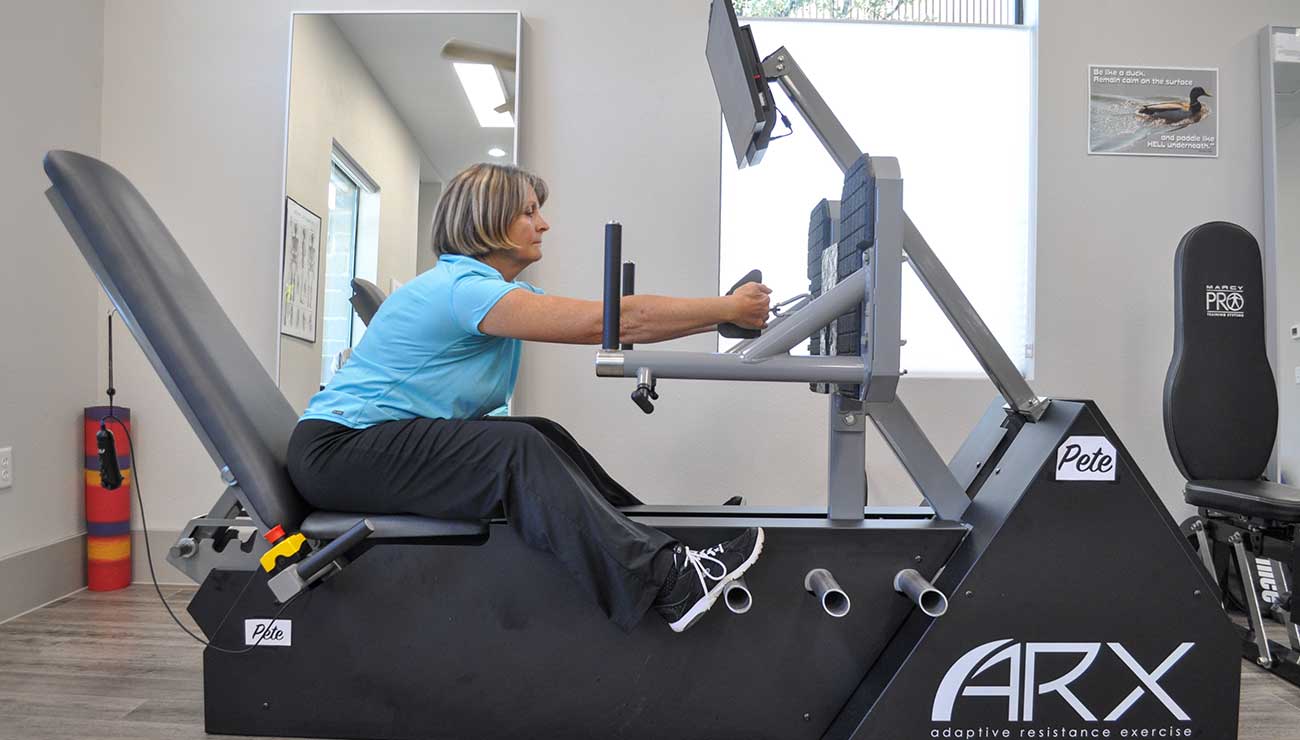
3. The Leg Press is accomplished through a push movement focusing on the quadriceps (front of the thigh), hamstrings (back of the thigh), and glutes (or buns). We’re finding keeping the large toe in contact with the press plate enables more glute activation. That’s how the “buns” can be stimulated.
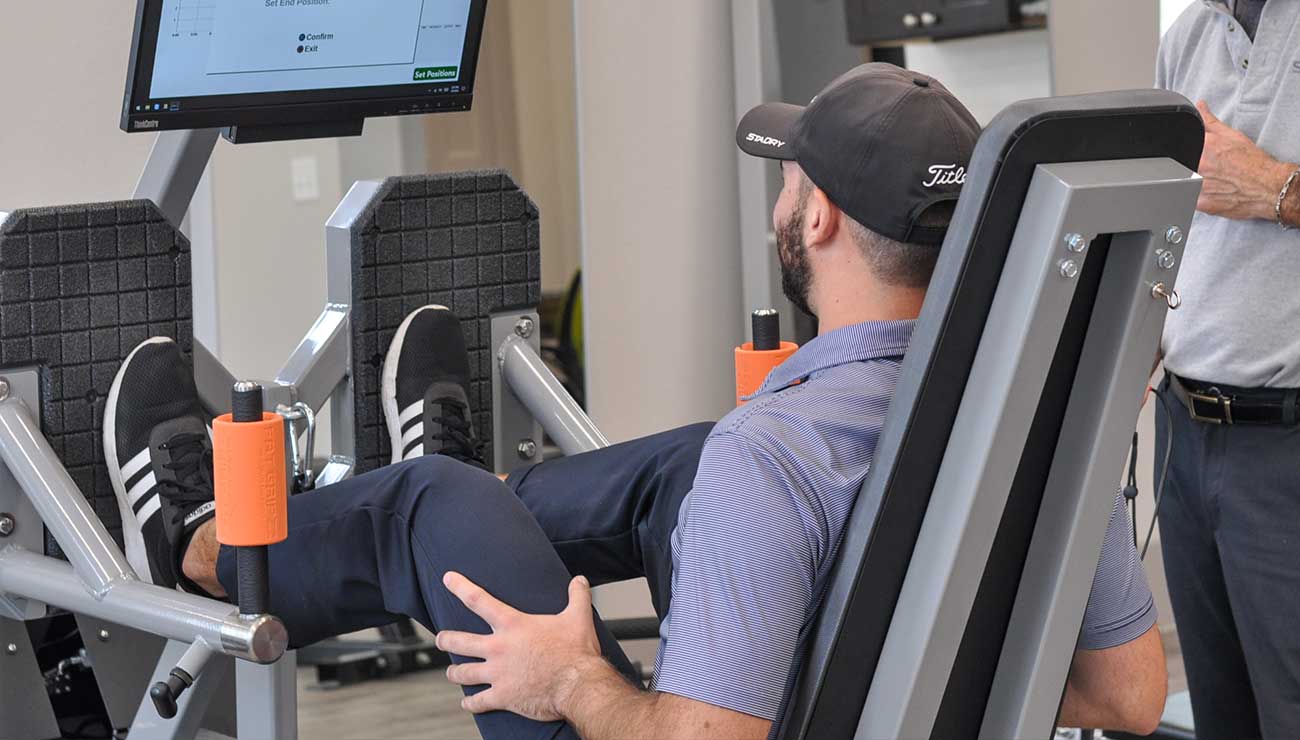
4. The Calf Raise is done through a standing “tip-toe” movement alternating with a foot retraction which focuses on the calf muscles which are called the soleus and gastrocnemius. These alternating movements enables strength and flexibility gains in the ankle/calf muscle complex
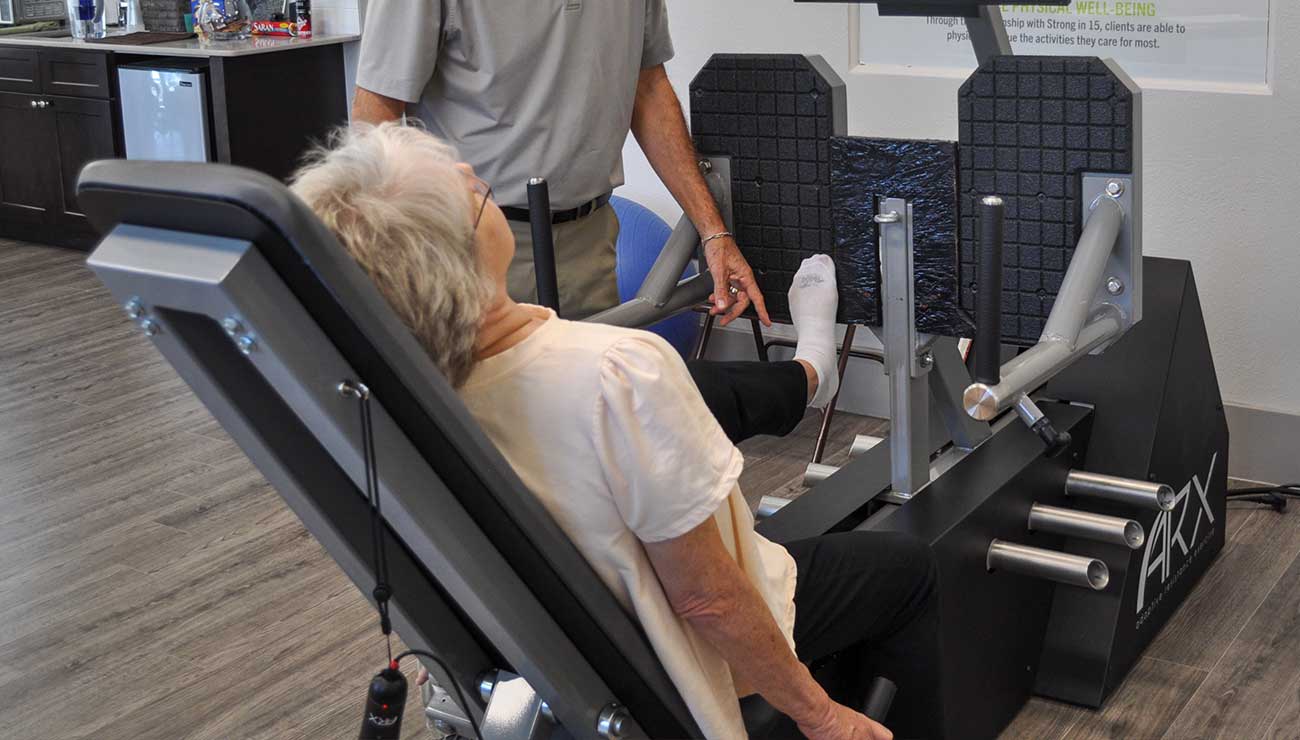
5. The Torso Flexion is the one movement I find most distasteful. It is a push movement that focuses on anterior abdominal muscles. This movement requires tremendous discipline to not use your head to assist with momentum. It is also exceptionally difficult to continuously breathe through the nose throughout the movement.
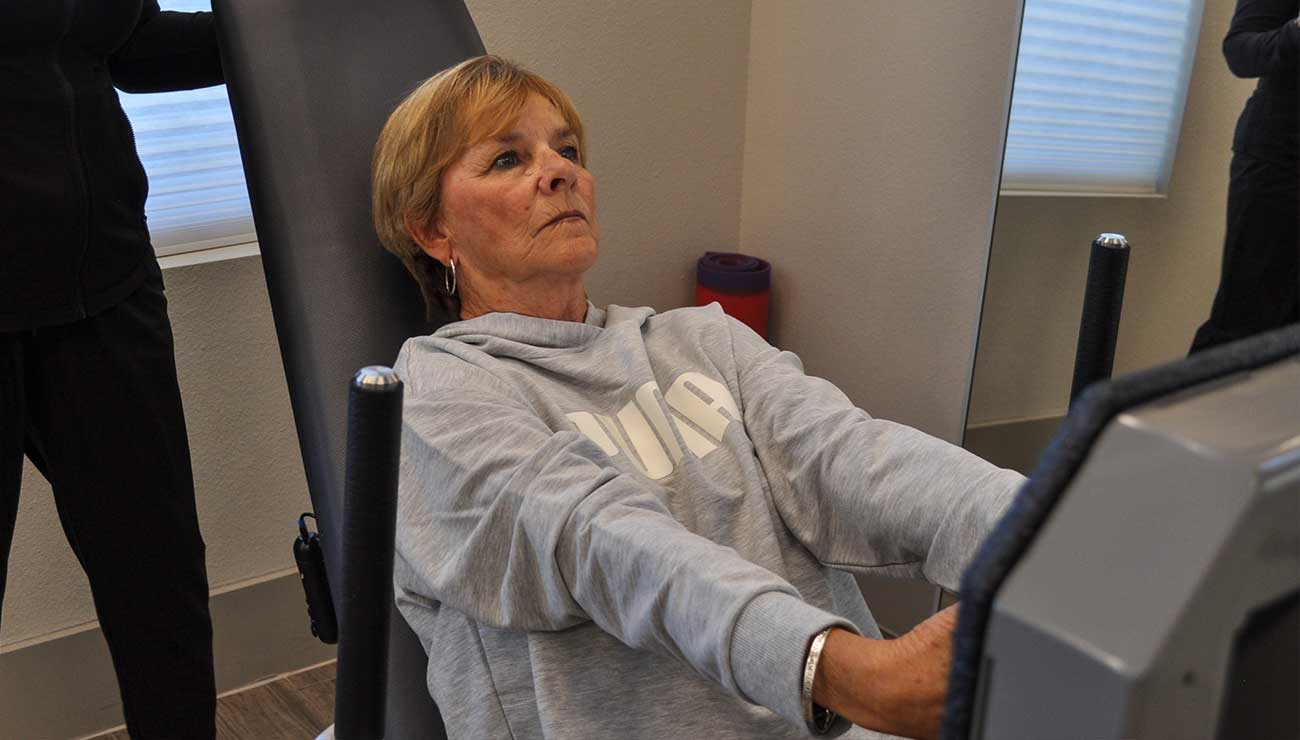
6. The Torso Extension is a pull movement focusing on the posterior lower back muscles and feels like a pull similar to a “tug of war.” For some, it feels as though you are leaning back to the point of falling backwards; causing the use of arms and the shoulders to remain stable while focusing on your core to initiate movement. We’re finding this movement, when performed initially with an RPE of 1-3, provides significant movement improvements as well as some relief in low-back pain symptoms.
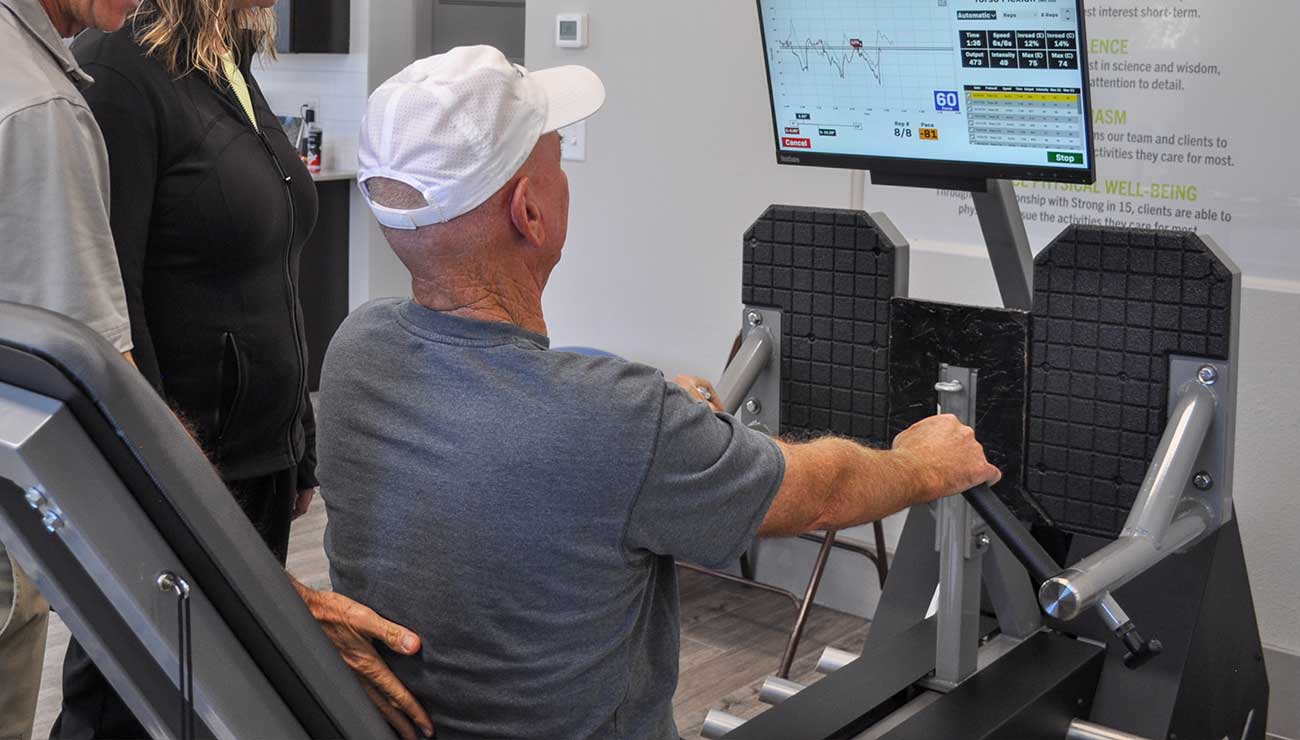
With Strong in 15, achieving physical strength is all about commitment to developing regular discipline over months. That long-term commitment by the individual, over which they have complete control, is the factor that leads to significant transformation.
70% strength improvements
occur by engaging in these exercise movements for
15 minutes once a week
98% strength improvements
occur by engaging in these exercise movements for
15 minutes twice a week
100% strength improvements
occur by engaging in these exercise movements for
15 minutes three times a week
These recommendations are based on strength training only, with the 3-day option being the most appropriate for virtually everyone, specifically when considering the following:
– Additional accountability is often required, when trying to achieve very specific health benefits such as:
✓ Nutrition health associated with disease and weight loss
✓ Injury recovery especially when there is urgency to return to athletic competition
✓ Chronic discomfort relief
✓ Chronic stiffness relief
– The full 100% effectiveness is often required for those seniors wishing to maintain the same or similar lifestyle while continuing to increase in age.
– Consistency is key when it comes to developing the skills and habits associated with strength building. This means delaying the dreaded decline in strength, movement and comfort. Based on my conversations with Emily Foster, PhD, and Steve Ritz, resisting the decline forever is possible with all of us.
Although it is natural to look for easier ways to accomplish these movements, taking the easy way out will inevitably lead to poor technique and could result in significant discomfort. The potential for injury does exist, but with the movement being so slow and having a trainer at your side, this risk is minimized. Gaining and maintaining strength and physical health is a lifelong practice that requires an age appropriate and highly effective exercise program.
For more information about Strong in 15, schedule a free consultation with a coach to get acquainted with the studio and ask all the questions you have. We are here to assist you in progressing toward your goals!
